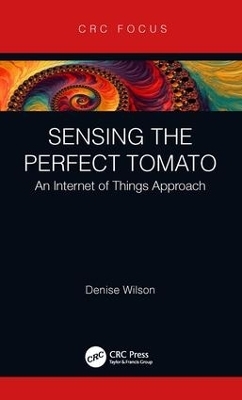
Sensing the Perfect Tomato
CRC Press (Verlag)
978-0-367-08676-3 (ISBN)
Fresh? Juice? Paste? Canned? Stewed? Diced? Pureed? Sun Dried? Salsa? Sauce? Ketchup?
Rare is the cuisine that does not make use of the tomato in some way, shape, or form, and the resulting culinary popularity of the tomato has led to its proliferation in fields and farms around the world. While some may still argue whether the tomato is a fruit or a vegetable, few would argue that tomato crops are highly lucrative, attractive to farmers in both developing and developed countries and on large and small farms alike. In fact, for those crops with significant global volume and market share, tomatoes are the highest valued among those crops that lack an affiliation to mind-altering drugs.
But, the tomato can be a persnickety critter. The tomato doesn’t like it too hot, too chilly, too wet, too dry, or too fertile. Many don’t ripen at the same time. Most are easily bruised. And, the selective breeding that has yielded a larger, more attractive, and deep red tomato has also mercilessly drained much of the taste and flavor from a once sweet and delectable fruit.
Enter the world of sensors and modern sensing technology. The Internet of Things (IOT), when using well chosen, well networked, and well aggregated sensors, has shown tremendous potential to support precision agriculture, providing a more detailed picture of crops than was previously possible using conventional crop monitoring techniques. But, the stringent resources and tight profit margins that are a fact of life among many tomato growing operations, large and small, mean that sensor technologies must be chosen and used carefully.
There is no doubt that each sensor must earn its keep in producing the perfect tomato. With that in mind, this book explores key opportunities to marry the potential of sensors that are networked within the IOT to the needs of tomato production in ways that are economically fruitful, technologically robust, and sustainable overall.
Denise Wilson is a professor in the Department of Electrical and Computer Engineering and adjunct professor in the School of Environmental and Forest Sciences at the University of Washington in Seattle where she has worked since 1999. Previously, she held a similar position at the University of Kentucky in Lexington, Kentucky. She is also founder and managing director of Coming Alongside, an environmental services non-profit organization whose mission is to make hazards posed by the environment to human and animal health visible and actionable. She received the B.S. degree in mechanical engineering from Stanford University (1988), the M.S. and Ph.D. degrees in electrical engineering from the Georgia Institute of Technology, Atlanta, in 1989 and 1995, respectively, and a M.Ed. from the University of Washington in 2008. She has published over 40 articles in peer-reviewed journals and over 100 articles in peer reviewed conferences on topics ranging from circuit design to environmental health. She has also published three book chapters and developed extensive web-based educational materials in educational research, environmental health, and the environmental impacts of technology. She has taught a wide range of university level courses at both undergraduate and graduate on topics related to the environmental and social impacts of technology, sustainable design for the developing world, impacts of natural disasters, circuits, sensors, and semiconductor devices. She has given public lectures to local communities on the social and environmental impacts of electronic waste and natural disasters as well as learning workshops at environmental health conferences on topics related to electronic waste, mobile phones and health, and heavy metals in air, soil, food, and water. Her research focuses on both engineering education as well as sensors systems with particular interests in applying sensors to addressing needs and solving problems in environmental monitoring.
Preface. Tomatoes in History. Tomatoes in Economics. Tomatoes in the Diet. How Tomatoes are Harvested. Opportunities for Sensing the Perfect Tomato. Speaking Chlorophyll. The Internet of Sensing Applied to Tomato Crops.
| Erscheinungsdatum | 27.11.2018 |
|---|---|
| Zusatzinfo | 21 Tables, black and white; 10 Illustrations, black and white |
| Verlagsort | London |
| Sprache | englisch |
| Maße | 138 x 216 mm |
| Gewicht | 335 g |
| Themenwelt | Mathematik / Informatik ► Informatik ► Theorie / Studium |
| Weitere Fachgebiete ► Land- / Forstwirtschaft / Fischerei | |
| ISBN-10 | 0-367-08676-X / 036708676X |
| ISBN-13 | 978-0-367-08676-3 / 9780367086763 |
| Zustand | Neuware |
| Informationen gemäß Produktsicherheitsverordnung (GPSR) | |
| Haben Sie eine Frage zum Produkt? |
aus dem Bereich


